
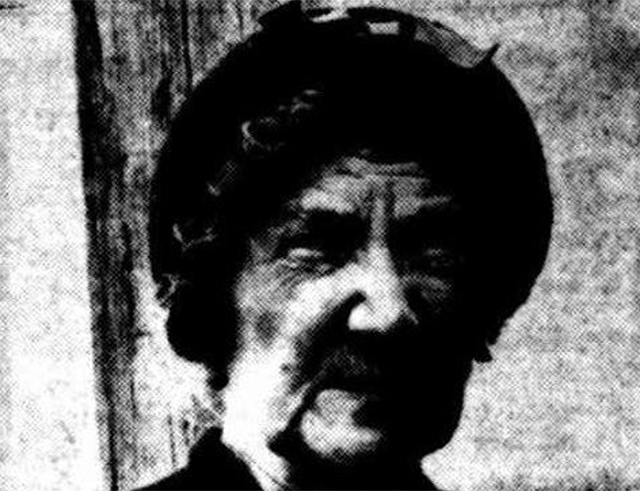

Mrs Nellie Collins (pictured right) was a 66 year old widow who lived in Vine Street St Kilda during the time of the late 1960s-70s redevelopment of St Kilda Junction.
Mrs Collins Vine Street home of some 40 years was a six room single front brick house which along with her neighbours had been had been scheduled to demolition. Mrs Collins however, had steadfastly refused to move until she was paid the compensation she required.
The Melbourne Metropolitan Board of Works had offered her $6000.00 for her property plus an additional extra $600 for the "disturbance". Although Mrs Collins had no electricity to the house and was accustomed to doing her cooking on her cluttered front porch using a "petrol drum' she was adamant she would not move until she was paid $16,000 compensation. As of 25 January 1967 Ms Collins house was the last property standing in the Street and had the potential to hold up the 11.8 million dollar project's construction schedule.1
Mrs Collins was still holding out by 28 February 1967 when it was reported that she had rejected a further offer from the Melbourne Metropolitan Board of Work (MMBW) to pay $7200 for her property plus an additional $600 for "disturbance". Mrs Collins was still demanding $16000 which she regarded as a "fair price" despite an "ultimatum" from the MMBW that she vacate the property by noon that day.2
On the Tuesday the 7th of March 1967 Mrs Collins lost the battle over her home. The MMBW issued a warrant to evict Mrs Collins. A Sheriff of the Supreme Court attended the property instigate the eviction. Mrs Collins was not home at the time and it is reported that within 20 minutes a front-end loader was demolishing her house.3 Swift action on behalf of the MMBW.
So ended Mrs Nellie Collin's struggle with the MMBW. We can only guess at how Mrs Collins felt.
Footnotes
A tram substations contain electrical equipment to convert the local power supply into the voltage needed to run the tram network.1 They are installed along a tram network where more power is needed by the tram network to maintain its efficient operation. (See this short video explaining how substations operate)
While substation have their utilitarian function their installation can raise concerns in the community concerning their visual impact and safety risk. In 2017 Public Transport Victoria and Yarra Tram identified St Junction as the location for a new substation.
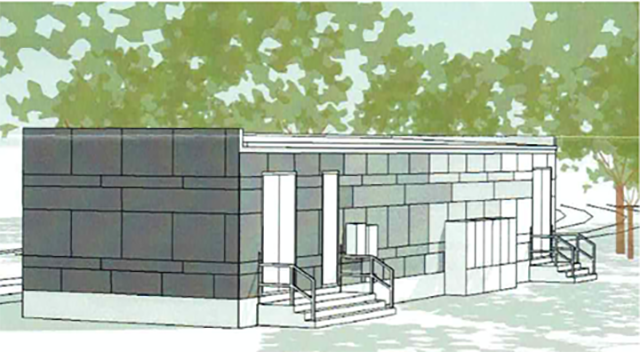
The substation as proposed in 2017
Yarra Trams stated the substation was needed to provide power to the nearby routes 3/3a, 5, 16, 64 and 67. The substation was to be 15m x 8m and situated within a fully-enclosed, containerised building. Yarra Trams stated the design will seek to blend in with the surrounding environment, with the architect reportedly seeking feedback from VicRoads and the City of Port Phillip Council to ensure the facade of the structure is “visually appealing” and “appropriate”.2
The substation was finally competed in 20193, however, substation was not without its community controversy. The JAAG (St Kilda Junction Action Group) newsletter/website provides an excellent time line related to the construction of the substation, the community concerns it raised and subsequent consultations (2017-2020).4 JAAG was critical of the consultation process, the visual and amenity impact of the substation, the failure to consider other locations, its potential as a graffiti target and its potential to negative impact an improved future design framework for the Junction.5
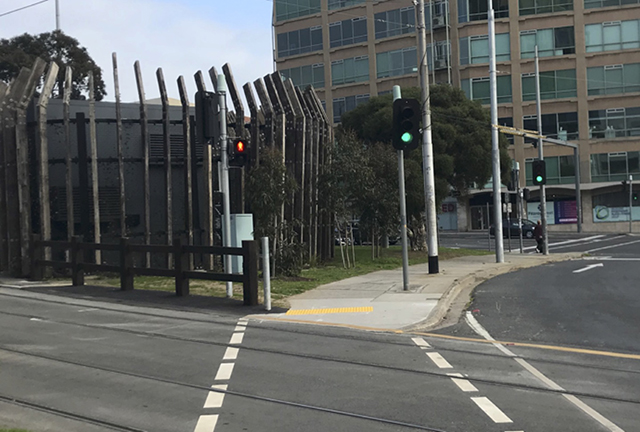
The substation as of 2020 (courtesy of JAAG)
The reader can make their judgment concerning the nature of this project. My own opinion is that it has at least one consistent feature with the general focus of the Junction history from the 20th and 21st centuries which is the triumph of utilitarianism and commercial expedience over visual aesthetics, community utility and integration.
Footnotes
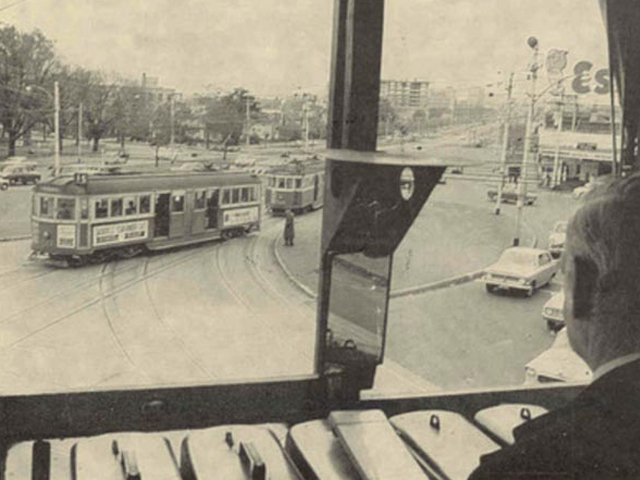
In 1929 a 'crows-nest' control box (Signal Box) was installed at the Junction on the corner of Wellington Street to manage the trams running through the Junction.1 This little control box was a local icon of the Junction for many years. It was accessed via a small ladder and was staffed by a single operator. The control box remained in operation until 1968 until it was decommissioned as part of the redevelopment of the Junction. The control box is now housed in the Melbourne Tram Museum.
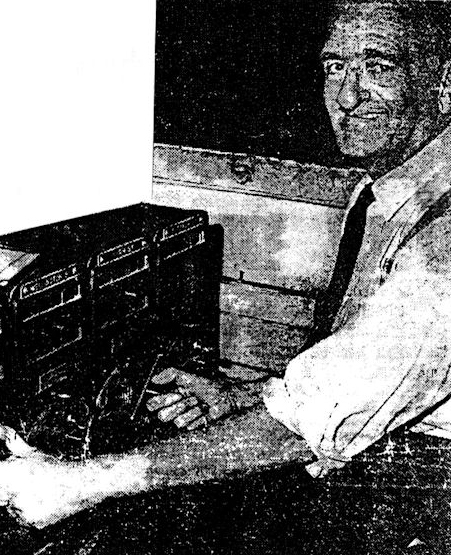
John Murphy of The Herald , Thursday, 15th February 1968 reporting on decommissioning of the control box. The article also interviewed its last operator Mr Leo Allender (shown on the right).2
The following are some excepts form the article:
The little green box, perched above 'St. Kilda Junction like a misplaced toolshed, seems to know the end is near. Its old wooden frame shudders and groans in protest each time a tram rattles past. "Like me she's getting old, and we can feel our time is nearly up." it's operator. Mr Leo Allender. 64. said yesterday.
You might say were are retiring together, he said. "Oh we could keep going for a long time yet, of course, but I'm afraid that progress has caught up with us."
"But the Junction won't he the same without its little green box." Mr Allender became its operator eight years ago. It is now second nature to him as he operates the levers and buttons that control the movement of the trams.
Recommended reading for more information see, St Kilda Junction signal box operation, Melbourne Tram Museum, website (accessed 28 March 2025).
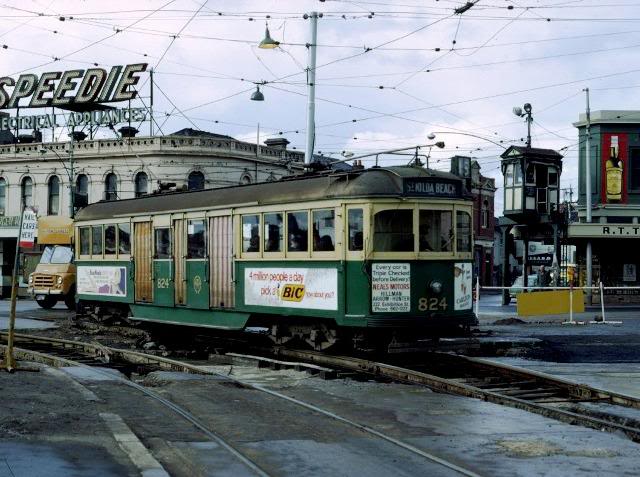
'Green' Tram Control Box 1968 (Dick Jones)
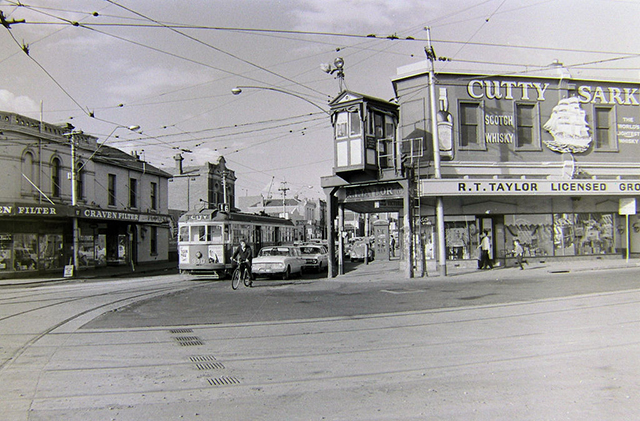
Tram Control Box 1968 (Trams Down Under Archive)
Footnotes

In 2006 the City of Port Phillip instituted a street art project at the Junction not without some local criticism.1 The motivation for the project may have derived from a range of factors such as; the cost of maintenance and cleaning, a desire to engage in a more constructive way with street artists, a desire to facilitate community involvement and commitment by participating is this sort of project, an attempt to attract tourists or an attempt to mitigate the perceived ugliness of the Junction. The project has become well known in the 'street art' community both nationally and internationally and is referred to in some quarters as the 'subterranean street art precinct'.
The Street Art Project was significant for the Junction in two important ways. To my knowledge it was the first community interaction with the Junction for many years that did not involve some utilitarian function (e.g. maintenance) or traffic management issue. This project was the first time for many years that the Junction was associated with something other than traffic and positive attempt to improve the poor status of the Junction with the community.
The images provided here is a small section of the street art at the Junction. These images were taken at various times in 2012 and 2015.
Footnotes












